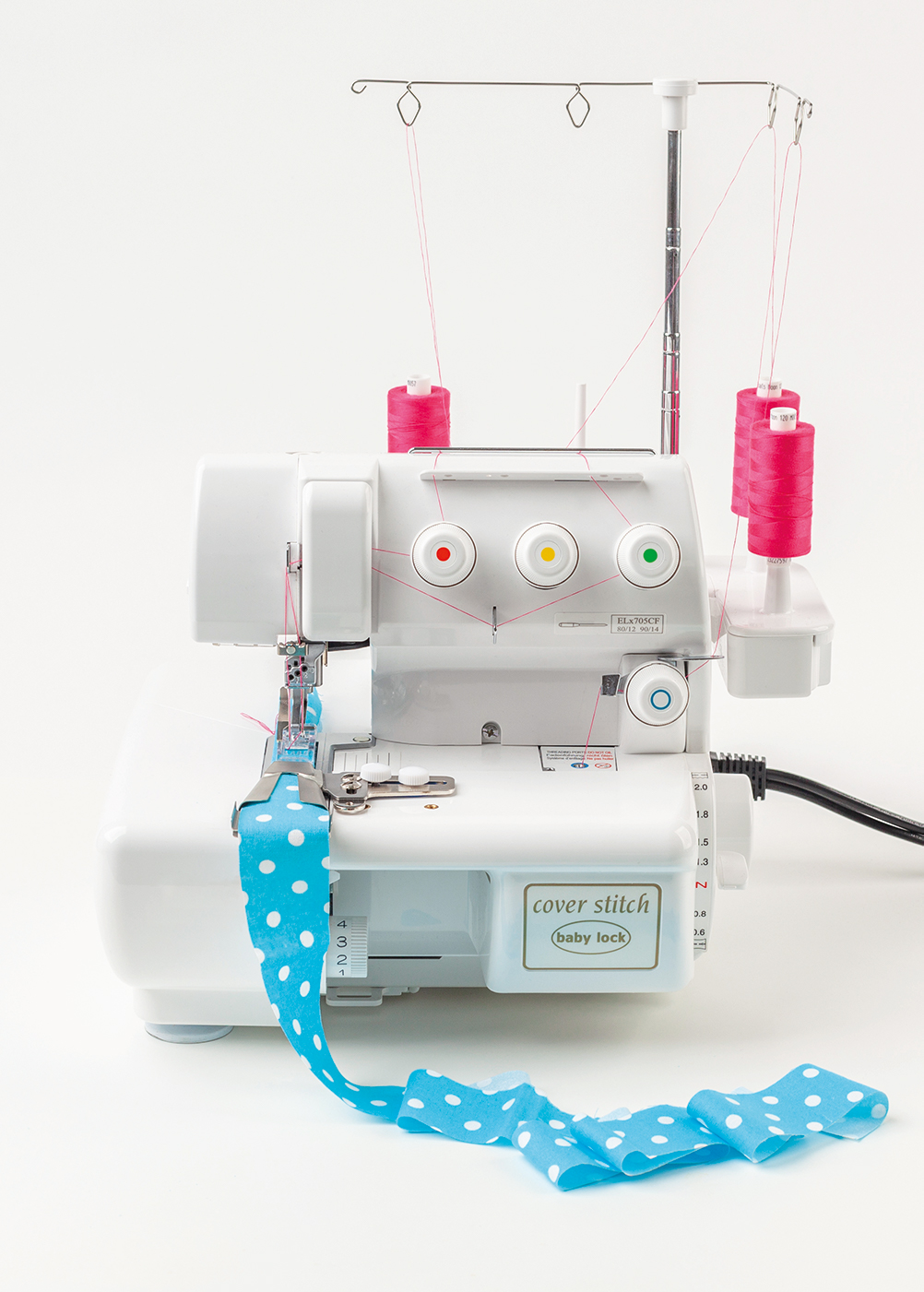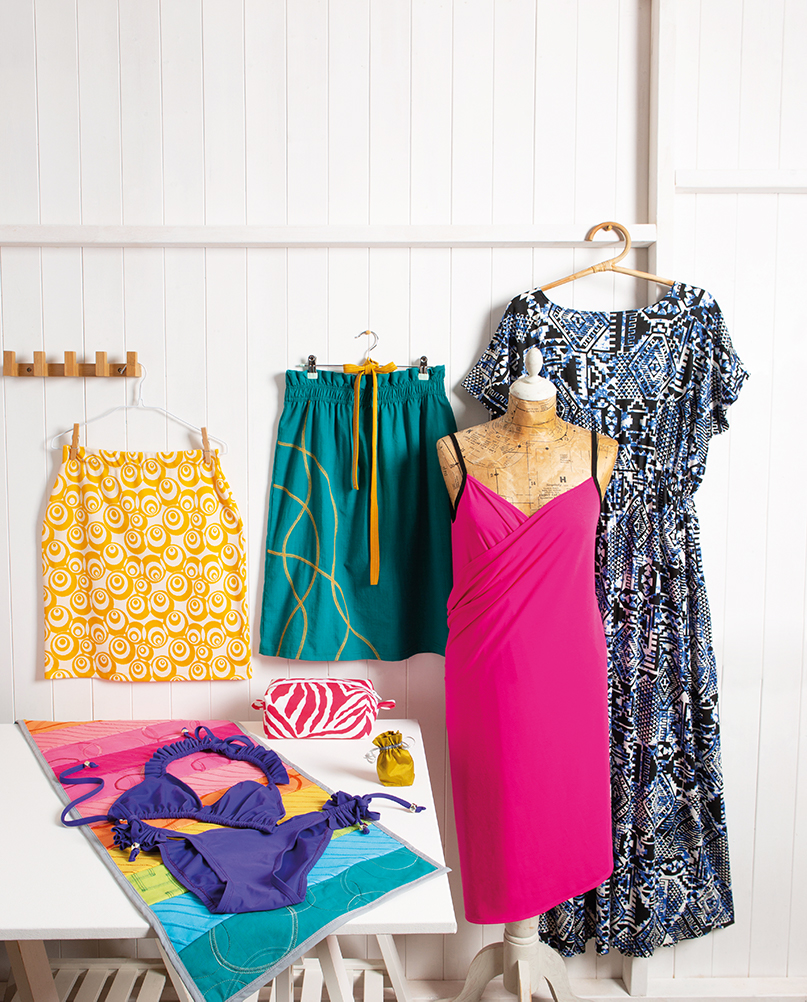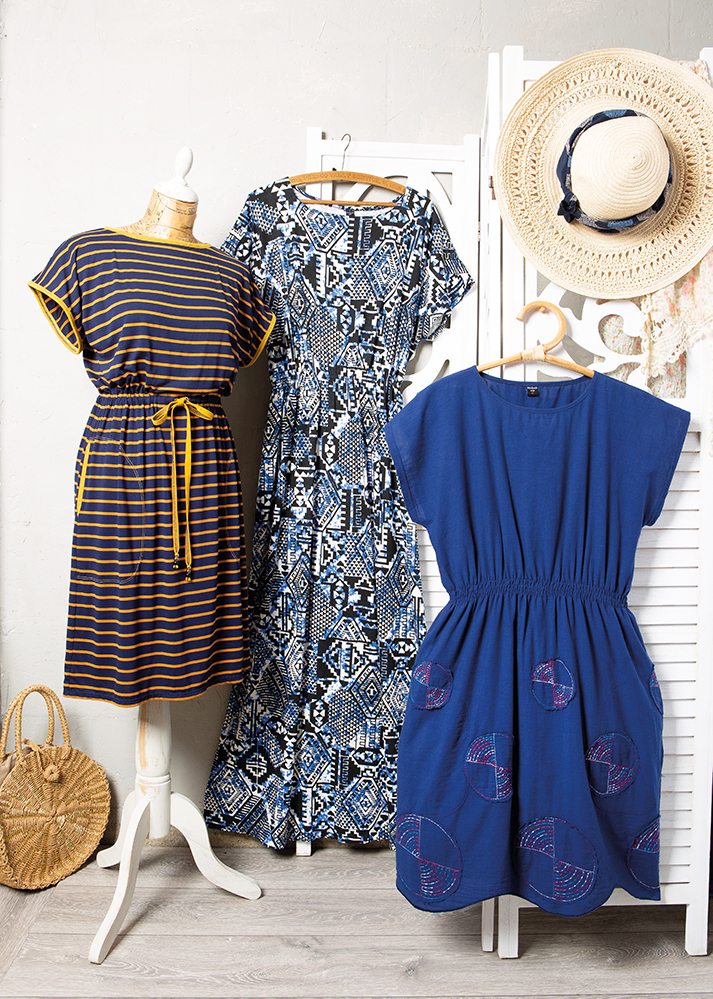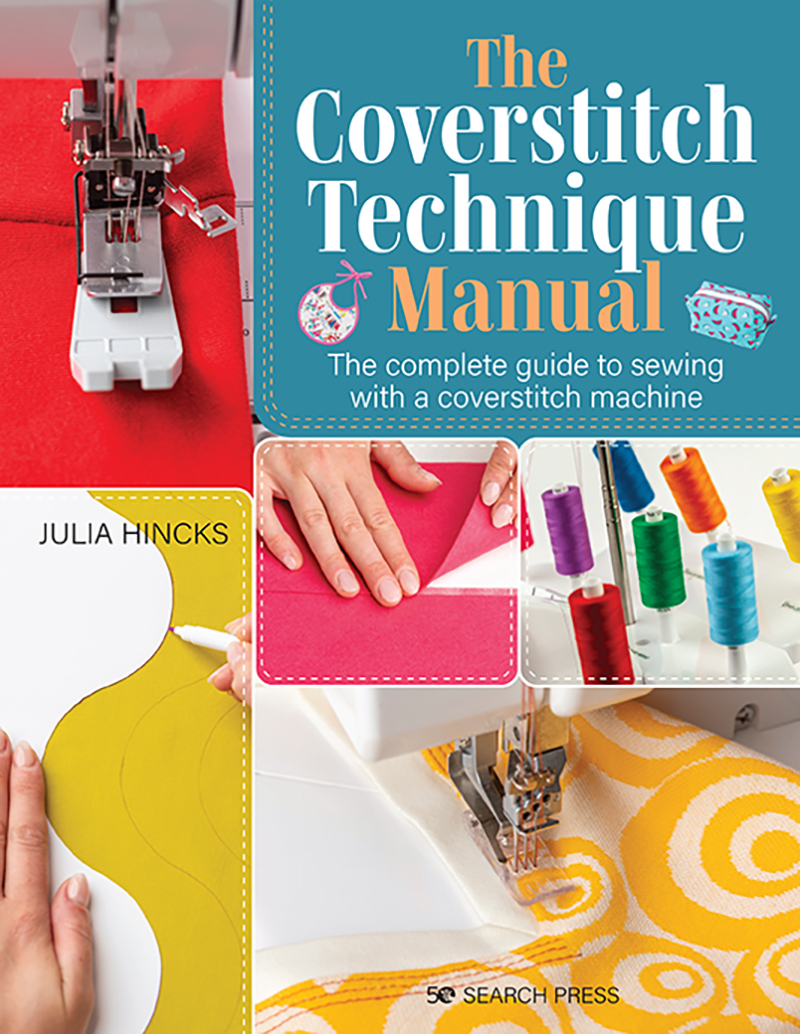Following the success of her best-selling book, The Overlocker Technique Manual, textile artist and teacher, Julia Hincks is back with her new title, The Coverstitch Technique Manual. Aimed sewers of all abilities, this book is the perfect guide to help you make the most of your coverstitch machine.
We caught up with Julia to hear about how she first started sewing, the inspiration behind the book and what makes a coverstitch machine unique.
How are you, Julia?
I’m really well thank you. I’ve just finished sewing up a caftan – my last project for this summer and I’m hoping for some sunshine to wear it on holiday next week.
Can you tell us a little about yourself; how did your love of sewing begin?
I’ve sewn, knitted and crocheted for as long as I can remember. My mother and grandmothers were keen crafters so I’ve kept up the family tradition. Sewing has always been a hobby of mine from a young age, but I didn’t ever think it would end up being my career.
I studied textiles at school which I loved. I remember spending weeks tie-dyeing pieces of fabric at home to create a patchwork dress for my GCSE project. It wasn’t until around ten years later, after training as a maths teacher, that I finally took a break from full-time teaching to study for a Diploma in Art and Design, specialising in Fashion and Pattern Cutting. This opened up a new pathway for me and I started teaching creative crafts to adults in Brighton and Hove, which I’ve been doing now for the last 14 years.


We’re all excited about the release of your new book, The Coverstitch Technique Manual! Can you tell us a bit about it and how it differs from your best-selling book, The Overlocker Technique Manual?
I’m so excited to have written another book. I’ve had The Coverstitch Technique Manual in mind since I finished writing The Overlocker Technique Manual, but it took me quite a while to commit it to paper! The book provides a complete guide to sewing with a coverstitch machine: explaining what it is, how and why to change the machine settings, various techniques and uses of the machine, additional accessories for the machine and how to use these, and a number of projects to test out your skills.
The format of the book is very similar to The Overlocker Technique Manual, but I’ve included more brands and types of machine in this book so it will appeal to all coverstitch machine owners and potential buyers. It also has a useful ‘Buyer’s Guide’ and ‘Maintenance’ section to help with making decisions on what machine to buy with additional tips on cleaning and looking after your machine.
For those of us who haven’t used a coverstitch machine before, can you explain what it is and why you enjoy using it?
Coverstitch machines are mainly used for hemming knitted or stretch fabrics but they can also be used for a number of other techniques, as I demonstrate in my book. A coverstitch machine is likely to be the third type of sewing machine that you purchase, after buying a regular sewing machine and overlocker. Many coverstitch machines look very much like regular sewing machines and others look a bit like overlockers, but they perform a very different type of stitch.
If you look at the hem of a T-shirt you’ll see coverstitching. Generally, it looks like two parallel lines of stitching on the right side of the fabric and an overlocked stitch on the wrong side of the fabric. Coverstitching will stretch and move with the fabric so it’s perfect for finishing hems on knitted fabrics, swimwear and activewear projects. This type of stitch can only be sewn on a coverstitch machine. It’s not possible on an overlocker or sewing machine. A similar effect can be created with a twin needle on a sewing machine but this doesn’t always look that great and it doesn’t stretch.
When I first started working with stretch fabrics my mum gave me her overlocker to make the job easier and to give the professional finish to my seams that I wanted. The seams looked great but the hems were terrible. They just didn’t look the way that my shop bought items did, so I invested in a coverstitch machine. It really is the best machine for hemming stretch fabrics and making your homemade clothes look like they’re not homemade.
What are your favourite sections from the book?
I was keen to show a number of different brands of coverstitch machine in this book, so I’m really pleased with how the section on ‘Setting up Your Machine’ has come together as this shows threading advice for a range of machines. Coverstitch machines are mainly used for hemming but I wanted to show that the machine can be used for other purposes.
The section on ‘Decorative Threads and Stitch Techniques’ gives step-by-step instructions, tips and advice on using the machine for decorative stitching using a variety of threads. I wanted to offer some projects in the book to allow readers to try out the techniques that the coverstitch machine is capable of. My favourite projects are the ‘Cambridge Table Runner’ as it’s so colourful, and the ‘Santorini Summer Dress’ – I keep making more versions of this dress, it’s so versatile.
Julia’s Top Tips for Coverstitching
- Choose your needle wisely
Make sure that you’re using the right needles for your machine and fabric type. Each machine will specify which needle system to use so make sure you follow the advice. Select the needle type to suit your fabric, for example, choose a needle labelled Jersey, Ball Point or ‘SUK’ for sewing with knits.
Don’t be afraid to adjust the settings on your machine. Take a photo of the machine dials, or make a note of what they are set to before you start altering them, then you can easily change them back to the starting positions.
Do plenty of tests on scrap fabrics to perfect the stitch settings before you sew on your project. If you’re sewing with the needles going through different thicknesses of fabrics, you may need a different tension setting for each needle. For the stretchiest stitch you may need to lower the differential feed and/or shorten the stitch length.
What are you currently working on at the moment?
I’m making another version of the Santorini Summer Dress from my book. It’s such a comfortable dress, and the right fabric choice and design features can make it look quite smart. This new version is long, with an elasticated waistline and a tie belt.


Do you have any exciting plans for the rest of the year?
I’m really excited to be able to offer some new courses and workshops this year. It’s been a rather difficult twelve months, trying to run face to face classes and having to cancel because of lockdowns. I’m so pleased we’re out on the other side and back to seeing people in real life again. I’ve been running one-to-one and group overlocker classes for the past seven years and now I’ll be adding ‘Get to Know Your Coverstitch Machine’ to my list of workshops.
I’ve planned a Sewing Weekender in the local village of Southwick, close to where I live. This will be two full days of sewing at a community centre for a small group of sewists. Students can stitch up a new garment or work on any project of their choice with lots of help on hand from me. I’m also going to be teaching at a few ‘new to me’ places this year which I’m very excited about.
I’ll be teaching a weekly Dressmaking class at Made and Making in Hassocks on Fridays and a Weekend Pattern Cutting class at Dot to Dot Studio in East Hoathly on alternate Saturdays.
Details of all my classes and workshops can be found on my website at www.houseofmisssew.com
You can see photos of my latest makes on Instagram at @juliahincks
You can see my video tutorials at www.youtube.com/c/HouseofMissSew
The Coverstitch Technique Manual is available from Search Press, RRP £15.99
